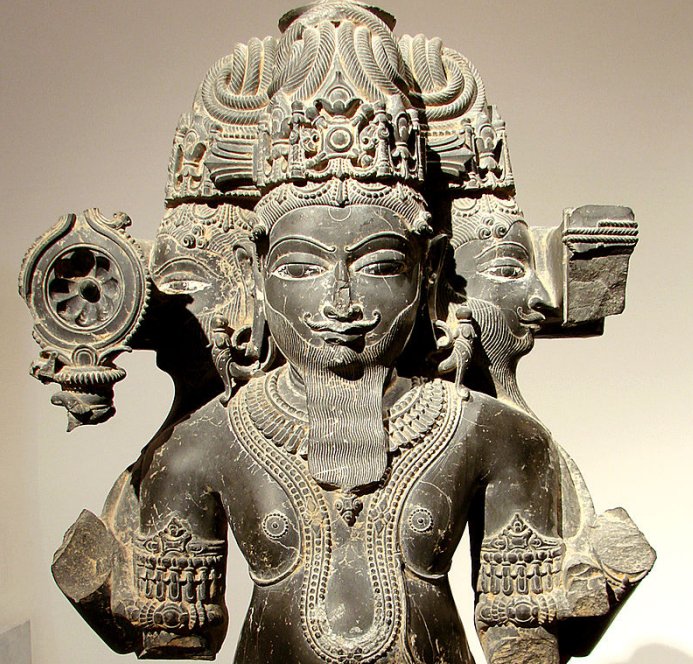Apedemak: Did The Three-Headed Lion War God Of Kush Originate From Ancient India?
Ellen Lloyd—AncientPages.com—Considered the war god of Kush, Apedemak was worshiped in ancient Meroe, a once magnificent and wealthy capital of the kingdom of Kush in Nubia, present-day Sudan.
Today, few ancient remains of the stunning buildings built by the Meroitics remain, but archaeologists have confirmed that the tall, slender pyramids, paintings, writing scripts, and other artistic and cultural forms made by the Nubian people were in the Egyptian style.
Three-headed Apedemak with four arms is depicted at Naqa Lion Temple. Clemens Schmillen, CC BY-SA 4.0
Three Kushite kingdoms dominated Nubia for over 3,000 years, with capitals in Kerma, Napata, and Meroe.
The ancient kingdom of Kush was very powerful and rival to Egypt, but there were many similarities between these two ancient civilizations.
God Apedemak (Apademak) was worshipped in various parts of Nubia. He was held in high regard because people believed this mighty deity brought victories to their armies and defeated their enemies.
There are various depictions of Apedemak. In several Meroitic temples, God Apedemak is depicted as a lion with three heads and four arms. Sometimes, he is portrayed as a snake with a lion head or simply a man with a lion head.
Studies reveal “the figure of Apedemak decidedly prevails, either human-bodied and lion-headed; or in zoomorphic figure representing him either as war-god with bow and arrows; or as a benefactor of mankind offering ankh-signs. However, his royal character is emphasized by the hemhem crown and his solar character is stressed by the sun-disk with wings and uraei." 1
Can God Apedemak Be Traced To Ancient India?
Some scholars have speculated whether God Apedemak can be traced to ancient India. If true, the lion God Apedemak may be one of the few gods depicted on the walls of Meroitic temples who is not Egyptian.
Archaeological excavations reveal that ”the Meroites, although having gods of their own, drew heavily on Pharaonic and Ptolemaic Egyptian ideas and motifs in depicting them as well as incorporating Egyptian gods into their own pantheon.” 2
In the book, Apedemak, Lion God of Meroe: A Study in Egyptian Meroitic Syncretism. L.V. Zabkar explores the theory the war god of Kush was created in the images of ancient Indian deities. 2
Sculpture of Brahma, Guimet Museum, Paris, France. Image source: Vassil - Public Domain.
“The book reviews in detail what is known of Apedemak, describes the numerous representations and shows how much of the iconogrpahy of this god is of Egyptian origin – even those aspects which have led some scholars to suggest influences from India, particularly in the multi-armed and-headed representation on the west wall of the lion temple at Naqa. Zabkar goes into some detail on this matter, arguing that there is plenty of evidence from Egypt to account for the so-called Indian aspects.” 3
The famous Hindu god Shiva is depicted with multiple heads and arms. Hindu God Brahma is a deity with four faces and four arms, sitting on a lotus flower, in a chariot (vahana), pulled by divine swans. Each face of Brahma points to a cardinal direction, but is this enough to draw parallels between the Kushite war god Apedemak and ancient Indian deities?
Apedemak is represented as a coiled snake with a lion’s head at Naqa Lion Temple. Clemens Schmillen, CC BY-SA 4.0
Most scholars think that though the representation of Apedemak is exotic, it is still a deity influenced by the Meroites’ artistic models, which can be traced to ancient Egypt.
One must remember that the lion has been a powerful ancient symbol for thousands of years.
Ancient civilizations associated the lion with power and royalty, and we can find this majestic animal in prehistoric cave paintings, ancient Sumerian and Egyptian artifacts dating back to 3000 B.C., and several ancient monuments, such as the marvelous lion gates in Hattusha, the capital of the kingdom of the Hittites.
Updated on June 4, 2024
Written by Ellen Lloyd – AncientPages.com
Copyright © AncientPages.com All rights reserved. This material may not be published, broadcast, rewritten or redistributed in whole or part without the express written permission of AncientPages.com
Expand for references- Vincentelli, Irene. "A Group of Figurated Clay Sealings from Jebel Barkal (Sudan)." Orientalia, NOVA SERIES, 61, no. 2 (1992)
- Shinnie, P.L. The International Journal of African Historical Studies 10, no. 3 (1977): 492-94. doi:10.2307/216747.
- V Zabkar - Apedemak, Lion God of Meroe
More From Ancient Pages
-
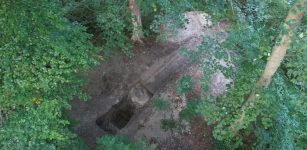 Mysterious Deserted Medieval Village And Castle Discovered In The Harz Mountains – 2,000 Artifacts Were Found
Archaeology | Nov 14, 2023
Mysterious Deserted Medieval Village And Castle Discovered In The Harz Mountains – 2,000 Artifacts Were Found
Archaeology | Nov 14, 2023 -
 Dangerous Anomaly Inside Mysterious European Mountain Remains Unexplained – Examining Evidence – Part 2
Ancient Mysteries | Mar 17, 2021
Dangerous Anomaly Inside Mysterious European Mountain Remains Unexplained – Examining Evidence – Part 2
Ancient Mysteries | Mar 17, 2021 -
 Dramatic Life Story Of Queen Marie Antoinette Executed By Guillotine During The French Revolution
Featured Stories | Oct 18, 2021
Dramatic Life Story Of Queen Marie Antoinette Executed By Guillotine During The French Revolution
Featured Stories | Oct 18, 2021 -
 Ancient Skulls From Ukraine Reveal Early Modern Humans Came From The East
Archaeology | Nov 9, 2023
Ancient Skulls From Ukraine Reveal Early Modern Humans Came From The East
Archaeology | Nov 9, 2023 -
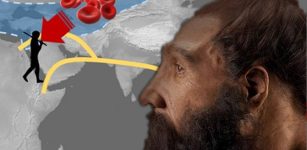 Neanderthal And Denisovan Blood Groups Deciphered And The Results Are Surprising
Archaeology | Aug 2, 2021
Neanderthal And Denisovan Blood Groups Deciphered And The Results Are Surprising
Archaeology | Aug 2, 2021 -
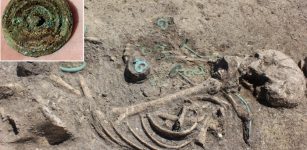 A Sensational Bronze Age Grave Of 20-Year-Old Elite Woman Found In Town Of Mány, Hungary
Archaeology | Aug 8, 2022
A Sensational Bronze Age Grave Of 20-Year-Old Elite Woman Found In Town Of Mány, Hungary
Archaeology | Aug 8, 2022 -
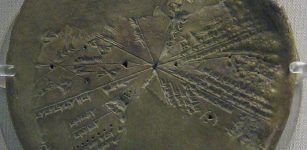 Assyrian King Ashurbanipal’s Great Library With Thousands Of Cuneiform Tablets
Civilizations | Dec 9, 2015
Assyrian King Ashurbanipal’s Great Library With Thousands Of Cuneiform Tablets
Civilizations | Dec 9, 2015 -
 Unexpected Neanderthal Behavior In Spain’s Southern Pyrenees – Revealed
Archaeology | Aug 14, 2024
Unexpected Neanderthal Behavior In Spain’s Southern Pyrenees – Revealed
Archaeology | Aug 14, 2024 -
 Did The Babylonian Fish-God Oannes Visit Tiahuanacu?
Ancient Mysteries | May 12, 2014
Did The Babylonian Fish-God Oannes Visit Tiahuanacu?
Ancient Mysteries | May 12, 2014 -
 3,000-Year-Old Geoglyphs May Depict The Heavens
Archaeology | Jun 25, 2018
3,000-Year-Old Geoglyphs May Depict The Heavens
Archaeology | Jun 25, 2018 -
 Shin-Au-Av – Secret Ancient Underground City Hidden Beneath Death Valley
Featured Stories | Jun 6, 2024
Shin-Au-Av – Secret Ancient Underground City Hidden Beneath Death Valley
Featured Stories | Jun 6, 2024 -
 ‘Collata Quipu’ May Explain Messages Hidden In Mysterious Writing Of Inca
Archaeology | May 10, 2017
‘Collata Quipu’ May Explain Messages Hidden In Mysterious Writing Of Inca
Archaeology | May 10, 2017 -
 Suprising Discovery Of A Well-Preserved Ancient Roman Road In London, UK
Archaeology | Nov 19, 2024
Suprising Discovery Of A Well-Preserved Ancient Roman Road In London, UK
Archaeology | Nov 19, 2024 -
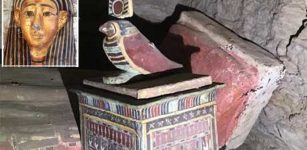 Huge Number Of Intact, Painted Coffins In Shafts Of Egypt’s Saqqara Necropolis
Archaeology | Nov 13, 2020
Huge Number Of Intact, Painted Coffins In Shafts Of Egypt’s Saqqara Necropolis
Archaeology | Nov 13, 2020 -
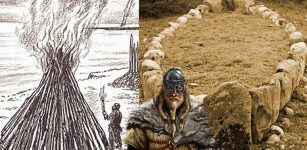 Ship-Shaped Burial Of Tjelvar – Legendary First Man Who Brought Fire To Gotland
Featured Stories | Feb 25, 2021
Ship-Shaped Burial Of Tjelvar – Legendary First Man Who Brought Fire To Gotland
Featured Stories | Feb 25, 2021 -
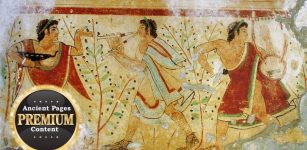 Intriguing Evidence Etruscans May Have Visited Canada
Ancient Mysteries | Sep 30, 2018
Intriguing Evidence Etruscans May Have Visited Canada
Ancient Mysteries | Sep 30, 2018 -
 Two-Million-Year-Old DNA Opens A ‘Game-Changing’ New Chapter In The History Of Evolution
Archaeology | Dec 7, 2022
Two-Million-Year-Old DNA Opens A ‘Game-Changing’ New Chapter In The History Of Evolution
Archaeology | Dec 7, 2022 -
 On This Day In History: National Foundation Day Celebrated In Japan – On Feb 11, 660 AD
News | Feb 11, 2017
On This Day In History: National Foundation Day Celebrated In Japan – On Feb 11, 660 AD
News | Feb 11, 2017 -
 Mysterious Advanced Underground Civilization And A Secret Society – Technology, History, Language And Goals – Part 2
Ancient Mysteries | Apr 23, 2018
Mysterious Advanced Underground Civilization And A Secret Society – Technology, History, Language And Goals – Part 2
Ancient Mysteries | Apr 23, 2018 -
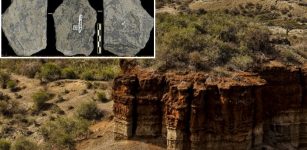 Olduvai Gorge: Direct Cosmogenic Nuclide Dating Of Olduvai Lithic Industry
News | Mar 31, 2022
Olduvai Gorge: Direct Cosmogenic Nuclide Dating Of Olduvai Lithic Industry
News | Mar 31, 2022


